#1942 Maria
Explore tagged Tumblr posts
Text






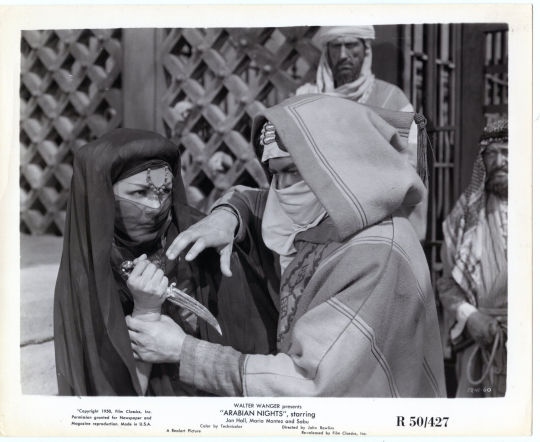

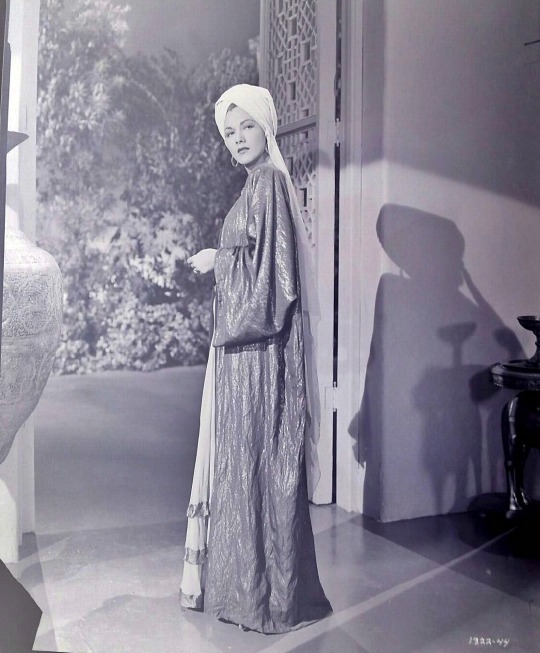









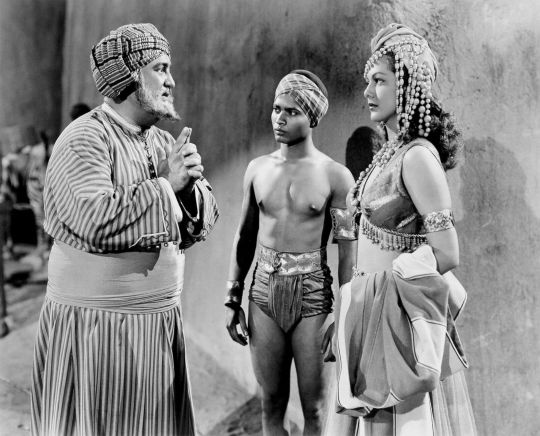


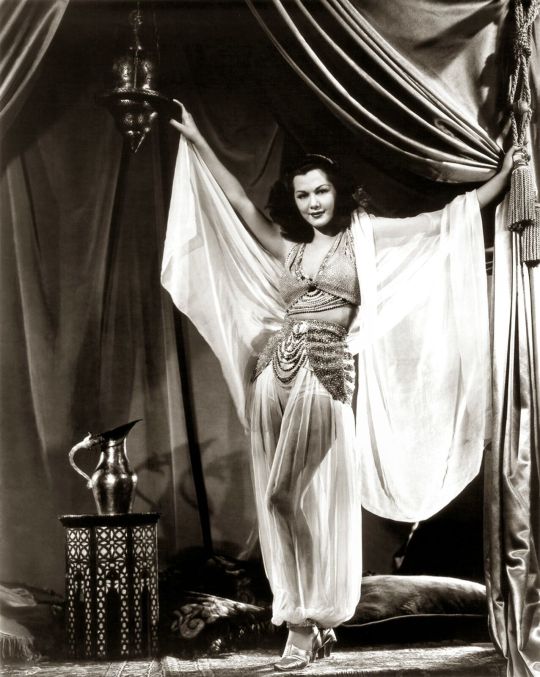
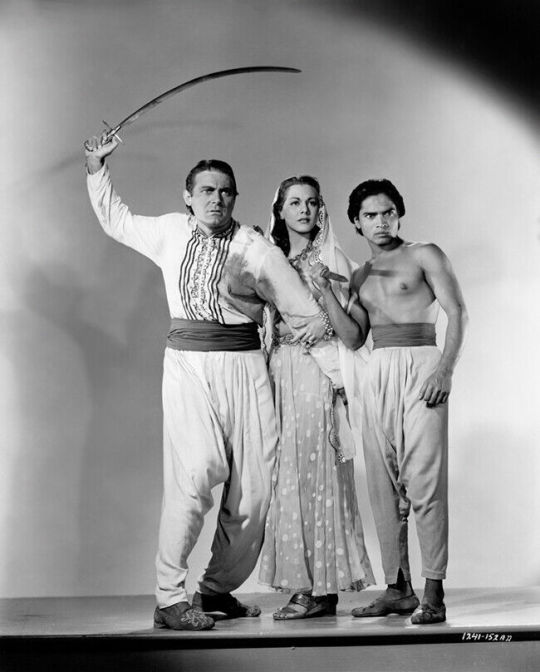
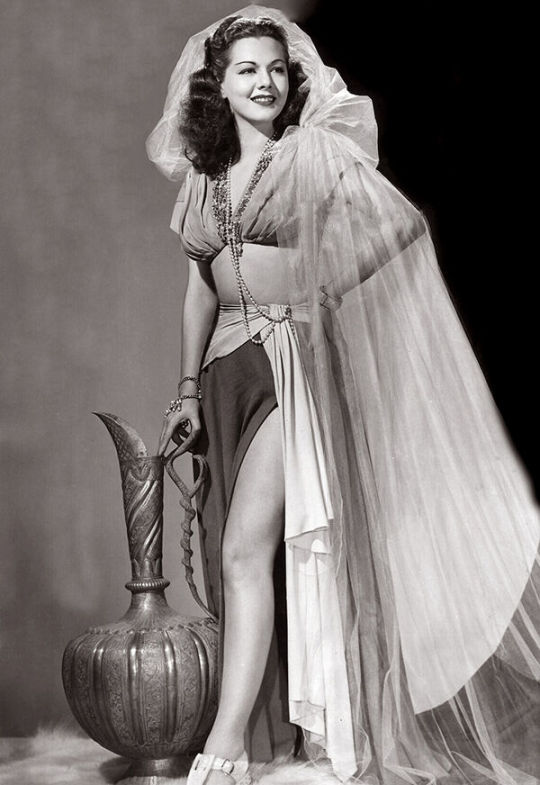






Arabian nights promotional photos (John Rawlins 1942)
Ebay & Scans from 1990s French magazine.
#Arabian Nights#1942 Arabian Nights#John Rawlins#Maria Montez#1942 Maria#Jon Hall#Sabu#Leif Erickson#Turhan Bey
8 notes
·
View notes
Text

The Phantom of Paris (The Mystery of Marie Roget, 1942)
#the mystery of marie roget#the phantom of paris#patric knowles#maria montez#maria ouspenskaya#1942#1940s movies#phil rosen#mystery#film noir#edgar allan poe#movie poster
66 notes
·
View notes
Text






The Mystery of Marie Roget (1942) Phil Rosen
October 12th 2024
#the mystery of marie roget#1942#phil rosen#patric knowles#lloyd corrigan#maria ouspenskaya#john litel#edward norris#maria montez#nell o'day#mystery of marie roget#phantom of paris
5 notes
·
View notes
Text
his grief and guilt | great prince
4 notes
·
View notes
Photo

1942 Carl L.T. Reitlinger, Marchesa Luisa Casati, London
#1942#portrait#photography#Carl L.T. Reitlinger#la marchesa casati#london#reitlinger#luisa casati#marchesa casati#marchesa#Marchesa Luisa Casati.#Marchesa Casati Stampa#marchesa luisa casati#marquise casati#luisa amman casati#Luisa Adele Rosa Maria von Amman#Luisa Adele Rosa Maria Amman#Luisa Amman#amman#Marquise Casati Stampa di Soncino#Marchesa Casati Stampa di Soncino#Luisa Marchesa Casati Stampa Di Soncino#Luisa Casati Stampa di Soncino
20 notes
·
View notes
Text
Nel 1933 Johannes Gehlen si trovava in una situazione particolare
Con l’arrivo al potere di Hitler nel gennaio 1933, la cosiddetta Machtübernahme – termine che ormai gli storici preferiscono usare al posto di Machtergreifung, per sottolineare la nomina di Hitler a Cancelliere in modo non violento, secondo modalità democratico-parlamentari -, molte cose sarebbero cambiate, non solo per la Germania ma anche per l’Italia. Seguì infatti un rapido avvicinamento tra…

View On WordPress
#1933#1938#1942#1945#1946#ciclotrone#Federale#Germania#Heidelberg#Johannes Gehlen#KWI#nazisti#ODEUM#Organisation Gehlen#ricercatore#Roma#Sarah Anna-Maria Lias Ceide#segreti#servizi#Terzo Reich
0 notes
Text
Nel 1933 Johannes Gehlen si trovava in una situazione particolare
Con l’arrivo al potere di Hitler nel gennaio 1933, la cosiddetta Machtübernahme – termine che ormai gli storici preferiscono usare al posto di Machtergreifung, per sottolineare la nomina di Hitler a Cancelliere in modo non violento, secondo modalità democratico-parlamentari -, molte cose sarebbero cambiate, non solo per la Germania ma anche per l’Italia. Seguì infatti un rapido avvicinamento tra…

View On WordPress
#1933#1938#1942#1945#1946#ciclotrone#Federale#Germania#Heidelberg#Johannes Gehlen#KWI#nazisti#ODEUM#Organisation Gehlen#ricercatore#Roma#Sarah Anna-Maria Lias Ceide#segreti#servizi#Terzo Reich
0 notes
Text
Nel 1933 Johannes Gehlen si trovava in una situazione particolare
Con l’arrivo al potere di Hitler nel gennaio 1933, la cosiddetta Machtübernahme – termine che ormai gli storici preferiscono usare al posto di Machtergreifung, per sottolineare la nomina di Hitler a Cancelliere in modo non violento, secondo modalità democratico-parlamentari -, molte cose sarebbero cambiate, non solo per la Germania ma anche per l’Italia. Seguì infatti un rapido avvicinamento tra…

View On WordPress
#1933#1938#1942#1945#1946#ciclotrone#Federale#Germania#Heidelberg#Johannes Gehlen#KWI#nazisti#ODEUM#Organisation Gehlen#ricercatore#Roma#Sarah Anna-Maria Lias Ceide#segreti#servizi#Terzo Reich
0 notes
Text


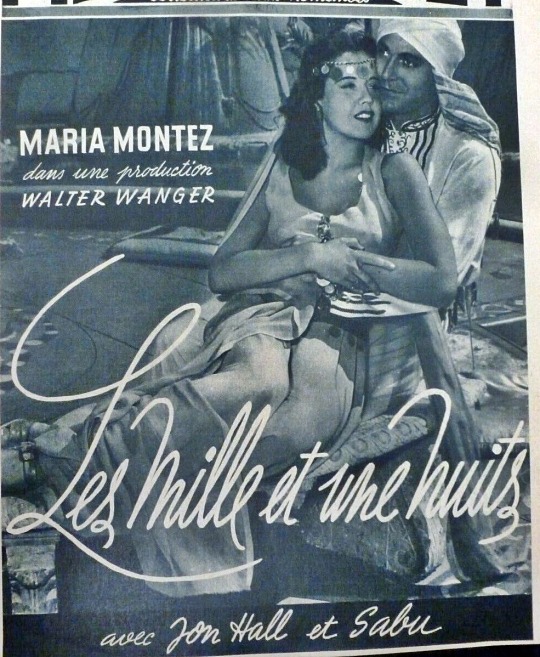


Arabian Nights
Arabian Nights is a 1942 adventure film directed by John Rawlins and starring Jon Hall, Maria Montez, Sabu and Leif Erikson. The film is derived from The Book of One Thousand and One Nights but owes more to the imagination of Universal Pictures than the original Arabian stories. Unlike other films in the genre (The Thief of Bagdad), it features no monsters or supernatural elements.
This is the first feature film that Universal made using the three-strip Technicolor film process, although producer Walter Wanger had worked on two earlier Technicolor films for other studios: The Trail of the Lonesome Pine (1936) at Paramount and the 1937 Walter Wanger's Vogues of 1938 for United Artists.
Plot (it may contain spoilers)
In ancient Persia, the young women of a royal harem read the story of Sherazade, unfolding the film's story. Sherazade, a dancer in a wandering circus, captures the attention of Kamar, the brother of the caliph, Haroun al-Rashid. Kamar's infatuation influences his attempts to seize the throne from Haroun and make Sherazade his queen. His revolt fails, and he is sentenced to slow death by exposure, but Kamar's men storm the palace and free their leader. Wounded and forced to flee, Haroun chances upon Sherazade's circus and is spotted by the young acrobat Ali Ben Ali. Aware of Haroun's identity, Ali hides him in the circus. Later, upon awakening from his injuries, Haroun beholds Sherazade and falls in love with her.
Meanwhile, Kamar assumes the throne, but Sherazade is not to be found. He orders the captain of his guard to find her, but a scheming grand vizier, Nadan, approaches the captain with the order to make Sherazade 'disappear.' After finding them, the captain sells the troupe into slavery. When the captain is found out, Nadan murders him in order to conceal his treachery. Haroun, Sherazade, and the acrobats escape the slave pens, but are found by Kamar's army and taken to a tent city in the desert. Kamar reunites with Sherazade and proposes, but she has fallen in love with Haroun instead. Nadan, recognizing the caliph, uses this knowledge to blackmail Sherazade into helping him remove Kamar from the throne, in return for safe conduct for Haroun out of the caliphate. In secret, however, he plans to have Haroun killed once he has crossed the border.
Upon learning of this insidious scheme, Ali and his fellow performers rescue Haroun, who then decides to free Sherazade with the help of the acrobats. But Haroun and the others are quickly captured, and Sherazade finally learns his true identity. Kamar engages Haroun in a swordfight, while the acrobats set fire to the tents; and the arrival of the caliph's loyal troops, summoned by Ali, triggers a massive battle. In the end, as Kamar prepares to deliver the deathstroke to Haroun, Nadan assassinates Kamar. But as he prepares to do in Haroun, Ahmad and Ali interfere, forcing him to flee. Nadan is stopped by a thrown spear and dies inside a burning tent, leaving Haroun, Sherazade, and their loyal friends to celebrate victory.
Cast
Jon Hall – Haroun-Al-Raschid
Maria Montez – Sherazade
Sabu – Ali Ben Ali
Leif Erikson – Kamar
Billy Gilbert – Ahmad
Edgar Barrier – Nadan
Richard Lane – Corporal
Turhan Bey – Captain of the Guard
John Qualen – Aladdin
Shemp Howard – Sinbad
William 'Wee Willie' Davis – Valda
Thomas Gomez – Hakim
Jeni Le Gon – Dresser / Dancer's Maid
Robert Greig – Eunuch
Charles Coleman – Eunuch
Emory Parnell – Harem Sentry
Harry Cording – Blacksmith
Robin Raymond – Slave Girl
Carmen D'Antonio – Harem Girl
The film was released on 25th December 1942.
Photos from ebay and text from wikipedia.
#Maria Montez#María Montez#1942#1942 Maria#Arabian Nights#1942 Arabian Nights#John Rawlings#John Hall#Sabu#Leif Erikson#Turham Bey#actress#La Reina del Tecnicolor#The Queen of technicolor#Montez Family#Gracia Family#Universal Pictures
16 notes
·
View notes
Text
Nel 1933 Johannes Gehlen si trovava in una situazione particolare
Con l’arrivo al potere di Hitler nel gennaio 1933, la cosiddetta Machtübernahme – termine che ormai gli storici preferiscono usare al posto di Machtergreifung, per sottolineare la nomina di Hitler a Cancelliere in modo non violento, secondo modalità democratico-parlamentari -, molte cose sarebbero cambiate, non solo per la Germania ma anche per l’Italia. Seguì infatti un rapido avvicinamento tra…

View On WordPress
#1933#1938#1942#1945#1946#ciclotrone#Federale#Germania#Heidelberg#Johannes Gehlen#KWI#nazisti#ODEUM#Organisation Gehlen#ricercatore#Roma#Sarah Anna-Maria Lias Ceide#segreti#servizi#Terzo Reich
0 notes
Text
Il fratello aveva già stabilito i primi contatti con l’intelligence statunitense
Con l’arrivo al potere di Hitler nel gennaio 1933, la cosiddetta Machtübernahme – termine che ormai gli storici preferiscono usare al posto di Machtergreifung, per sottolineare la nomina di Hitler a Cancelliere in modo non violento, secondo modalità democratico-parlamentari -, molte cose sarebbero cambiate, non solo per la Germania ma anche per l’Italia. Seguì infatti un rapido avvicinamento tra…

View On WordPress
#1933#1938#1942#1945#Germania#Heidelberg#III Reich#intelligence#Italia#Johannes Gehlen#nazista#ODEUM#Organisation Gehlen#Reinhard Gehlen#RFT#roma#Sarah Anna-Maria Lias Ceide#segreti#servizi#statunitense
0 notes
Text
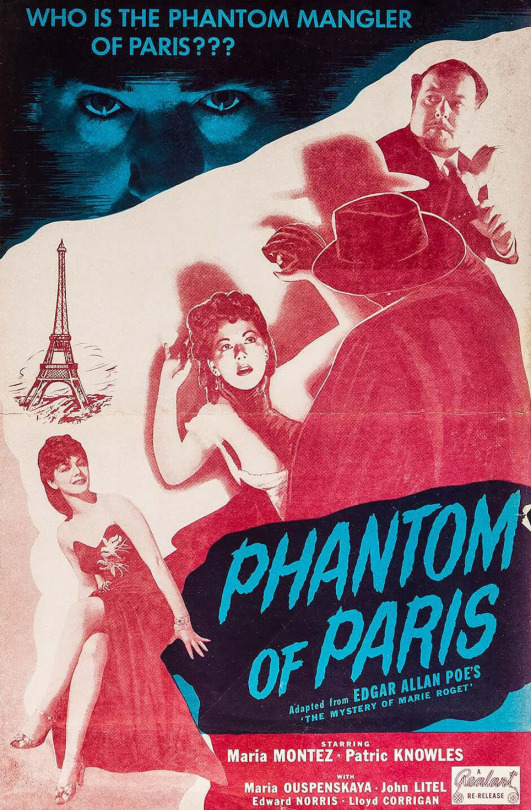
The Phantom of Paris (The Mystery of Marie Roget, 1942)
#the phantom of paris#the mystery of marie roget#patric knowles#maria montez#maria ouspenskaya#1942#1940s movies#phil rosen#mystery#film noir#edgar allan poe#press book
39 notes
·
View notes
Text
Il fratello aveva già stabilito i primi contatti con l’intelligence statunitense
Con l’arrivo al potere di Hitler nel gennaio 1933, la cosiddetta Machtübernahme – termine che ormai gli storici preferiscono usare al posto di Machtergreifung, per sottolineare la nomina di Hitler a Cancelliere in modo non violento, secondo modalità democratico-parlamentari -, molte cose sarebbero cambiate, non solo per la Germania ma anche per l’Italia. Seguì infatti un rapido avvicinamento tra…

View On WordPress
#1933#1938#1942#1945#Germania#Heidelberg#III Reich#intelligence#Italia#Johannes Gehlen#nazista#ODEUM#Organisation Gehlen#Reinhard Gehlen#RFT#roma#Sarah Anna-Maria Lias Ceide#segreti#servizi#statunitense
0 notes
Text
“The very fact of fighting an election is on the contrary a counter-revolutionary activity.” What Are We Voting For?
– Maria Luisa Berneri (1942)

1 note
·
View note
Text
headcanon
So you know how it's canon that Will listens to true crime podcasts?
What if that's how he finds out that Nico is from the 1940s?!
Like he's listening to the latest episode about 'the death of Maria di Angelo and the disappearance and supposed kidnapping of her missing children, Niccolò and Bianca di Angelo'.
And it's not all that strange for demigods to pop up in conspiracy blogs or podcasts - Percy had a four part series about him, and Will listened to the whole thing during a nightshift at the infirmary.
So yeah, Will starts listens to the di Angelo episode thinking nothing of it, maybe he's just hoping to have a laugh about what the mortals thought happened to Nico or maybe he's more than a little curious about Nico's mysterious past.
And the hosts, in crackling stereo voices because they desperately need a better mic, are talking about lightning striking the hotel, how "the storm popped up out of nowhere" and the "strange seismic activity reported in the area at the time"...and then the date drops...
The hosts say something along the lines of, "The di Angelo siblings were reported missing by their family back in Italy after no word had been received of their safe passage to America. The police report states they were last seen by an anonymous witness entering the Lotus Hotel & Casino with an unknown third party in December of 1942."
And Will's just sat there, gaping at the infirmary bed he'd been stripping of its sheets. Because everything is adding up now, and Will's not quite sure how he missed it...
#cue Will freaking out about Nico’s vaccination status#the next episode is totally 'The Lives and Deaths of Marie and Hazel Levesque'#and Will's brain just breaks again#will solace#nico di angelo#pjo headcanon#solangelo#pjo#maybe one day I'll write this fic#in the very distant future bc I have so many others in the works#timeline wise i'd imagine this is set during or soon after Nico's three days
2K notes
·
View notes
Text
Nouvelle Société du Vril:La bataille de Los Angeles 1942 : nouvel éclairage sur l’image originale
Voici un lien important vers notre site frère afin de vous initier à son développement : Alors que le président dormait à Washington, un énorme vaisseau spatial extraterrestre est apparu au-dessus de Los Angeles aux premières heures du 25 février 1942. Pearl Harbor venait d’être attaqué quelques mois auparavant et il y avait une véritable peur des raids japonais sur la côte ouest de…

View On WordPress
#25 février 1942#Bataille de Los Angeles#Défenseurs de la Terre#Dissimulation de rencontre extraterrestre#document secret#extraterrestre#Los Angeles#Maria Orsic#Michel Duchaine#Nouvelle Société du Vril#ovni#vie
1 note
·
View note